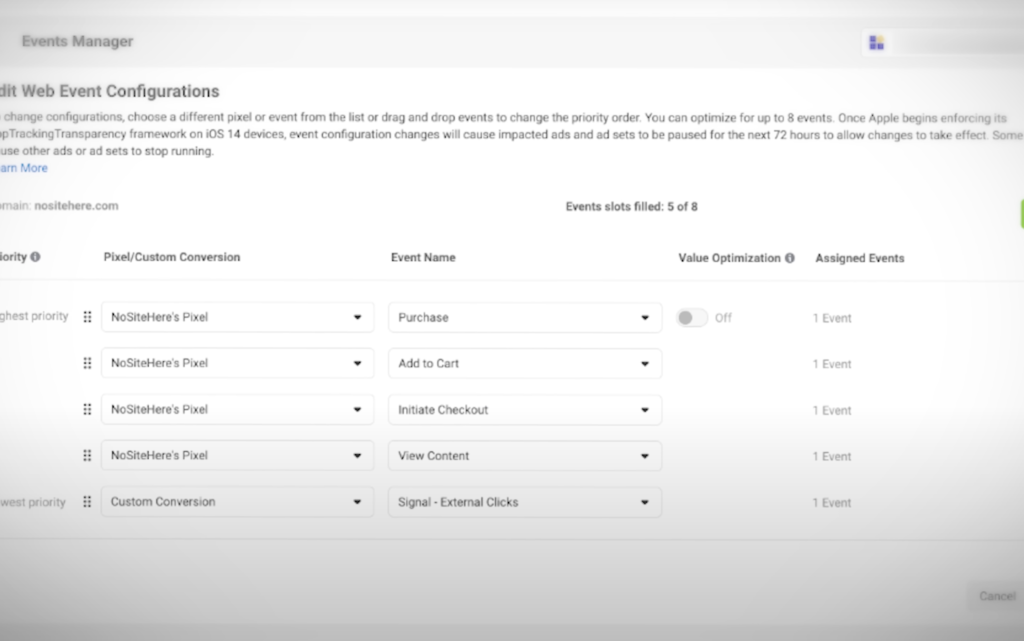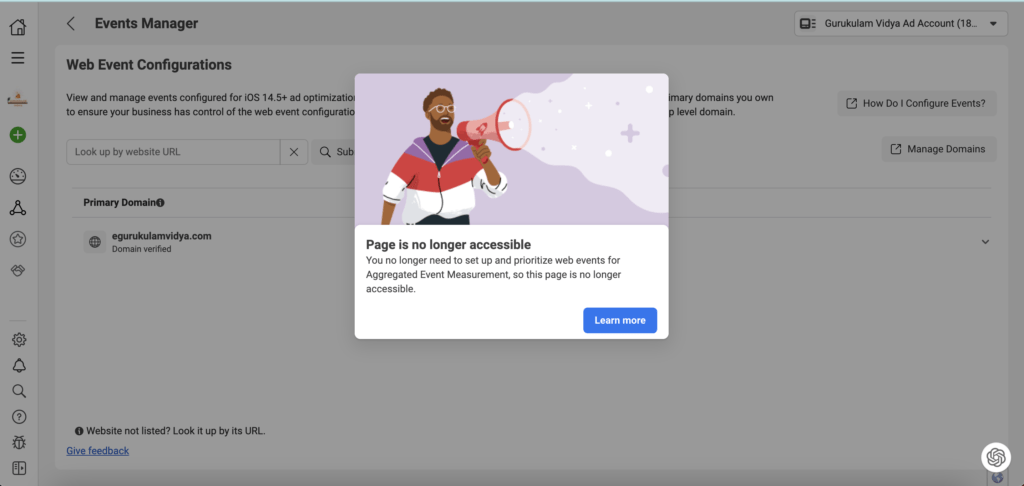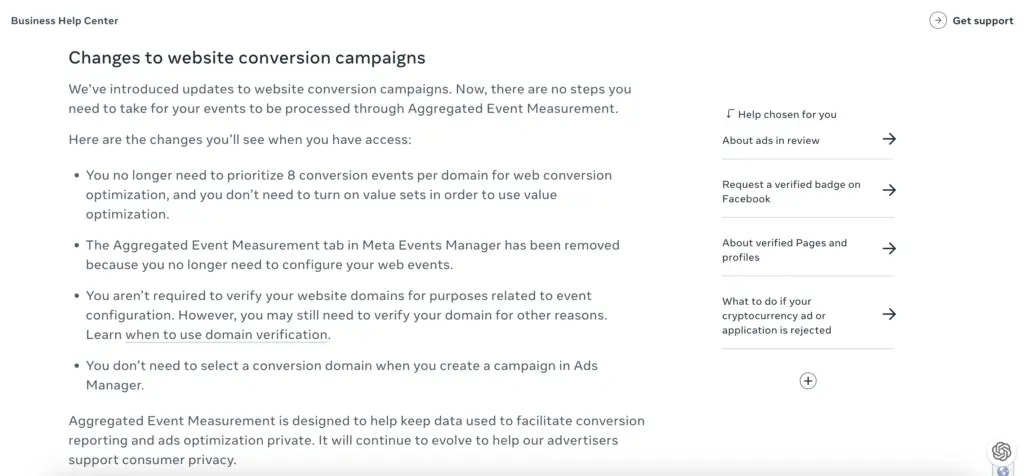MASSIVE Change To Facebook Ads Tracking! – The retirement of aggregated event measurement!
Table of Contents
- 1 MASSIVE Change To Facebook Ads Tracking! – The retirement of aggregated event measurement!
- 2 Introduction:
- 3 The Retirement of Aggregated Event Measurement
- 4 Understanding Aggregated Event Measurement and its Impact
- 5 Streamlined Tracking Process
- 6 Continuing Importance of the Facebook Pixel
- 7 Meta’s Role in the Change
- 8 Implications for Advertisers
- 9 Conclusion:
- 10 Reference
We are in the middle of a huge change to Facebook ads tracking. Since iOS 14.5, tracking the actions people take on our website after they click on a Facebook ad or Instagram has been difficult.
As advertisers, we were required to complete a series of extra steps. Fortunately, the AEM is being retired and we no longer have to use Aggregated Event Measurement for a whole bunch of technical things that were necessary until very recently.

In this blog post, I discuss what this means for Facebook advertisers. #facebookads #facebookadstracking
Introduction:
In the fast-paced world of digital advertising, staying on top of platform updates and changes is crucial for marketers. One of the major challenges advertisers have faced recently is accurate tracking of Facebook ads, particularly since the release of iOS 14.5.
However, there’s good news on the horizon.
In this blog post, I’ll dive into the recent change to Facebook ads tracking and explain how it benefits advertisers.
Let’s explore the details!
The Retirement of Aggregated Event Measurement
Simplified Tracking and Accurate Results
The biggest change in Facebook ads tracking is the retirement of aggregated event measurement. This tool, which was introduced after iOS 14.5, aimed to address data inaccuracies caused by the update. However, it led to complex setups and prioritization of web events, making it challenging for advertisers to obtain accurate data.
With the removal of aggregated event measurement, advertisers no longer need to go through the hassle of configuring and prioritizing web events or selecting a domain for iOS 14.5+. This means simplified tracking and more accurate results. When you visit the Events Manager in your ad account, you’ll notice that the option for aggregated event measurement is no longer available.
Understanding Aggregated Event Measurement and its Impact
Tracking Limitations for iOS Users
Before we delve deeper into the recent change, let’s recap what aggregated event measurement entailed. It was a tool that advertisers used to track Facebook ad conversions on iOS devices. However, it had limitations: advertisers could only track the highest priority conversion event for users on iOS devices.

For example, if someone clicked on an ad using an iPhone and performed multiple actions on the website, such as viewing pages, initiating checkout, adding items to the cart, and making a purchase, only the purchase event would be tracked. This limitation was frustrating, but it was better to have some data rather than none at all.
Streamlined Tracking Process
Say Goodbye to Domain Verification!
One of the significant benefits of the retirement of aggregated event measurement is the elimination of domain verification requirements.
Previously, advertisers had to verify their domains to configure conversion events and establish priority lists. This process added complexity, especially for third-party websites or platforms where domain ownership couldn’t be verified.

Now, advertisers can track conversions without the need for domain verification. Although it’s still recommended for other reasons, not having to verify domains saves time and simplifies the tracking process, making it particularly useful for advertisers who generate conversions via third-party websites.
Continuing Importance of the Facebook Pixel
Tracking Actions After Ad Clicks
While the retirement of aggregated event measurement streamlines tracking, it’s essential to note that the Facebook pixel remains a critical component. Advertisers still need to install the Facebook pixel on their websites to track user actions after ad clicks. The pixel ensures that data on post-click actions is captured accurately, contributing to better ad campaign insights.
Meta’s Role in the Change
Automated Prioritization and Enhanced Tracking
You may wonder why Facebook’s parent company, Meta, made this change. While Meta is phasing out aggregated event measurement, the functionality will likely continue behind the scenes, handled automatically by Meta.
Advertisers won’t need to manually configure conversion event priority lists; Meta is expected to automate this process.
For instance, if an ad account is optimizing for purchases, Meta will automatically place the “purchase” conversion event at the top of the priority list. This ensures that advertisers can track the desired actions performed by iOS users, even without the manual setup. Although it’s uncertain if the prioritization will dynamically change based on real-time campaign performance, such a feature could further enhance data quality and provide better insights.
Implications for Advertisers
Time Savings and Enhanced Data Quality
The retirement of aggregated event measurement comes as great news for advertisers. It eliminates the extra steps, complexities, and technicalities associated with configuring web events and verifying domains. Advertisers can save time and focus on analyzing accurate data to make informed decisions about their ad campaigns.
With this change, advertisers can expect no drop-off or potentially improved data quality. Meta understands the importance of tracking for advertisers and is unlikely to implement a change that would negatively impact tracking. Therefore, this change marks a step towards restoring tracking capabilities to pre-iOS 14.5 standards.
Conclusion:
Facebook’s retirement of aggregated event measurement presents a significant development in the world of ad tracking. By simplifying the process and eliminating domain verification requirements, advertisers can enjoy streamlined tracking and potentially enhanced data quality.
The change signifies a step forward in restoring tracking capabilities to pre-iOS 14.5 levels, benefitting marketers who rely on accurate data for making informed decisions.
As the digital advertising landscape evolves, staying informed about these changes is crucial for advertisers seeking success in their campaigns.
Reference
- About Meta’s Aggregated Event Measurement : https://www.facebook.com/business/help/721422165168355?id=1877298665783613
- Check out : Unveiling Facebook Ads Data: A Promising Future for Advertisers





